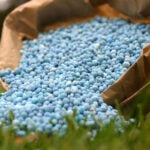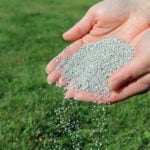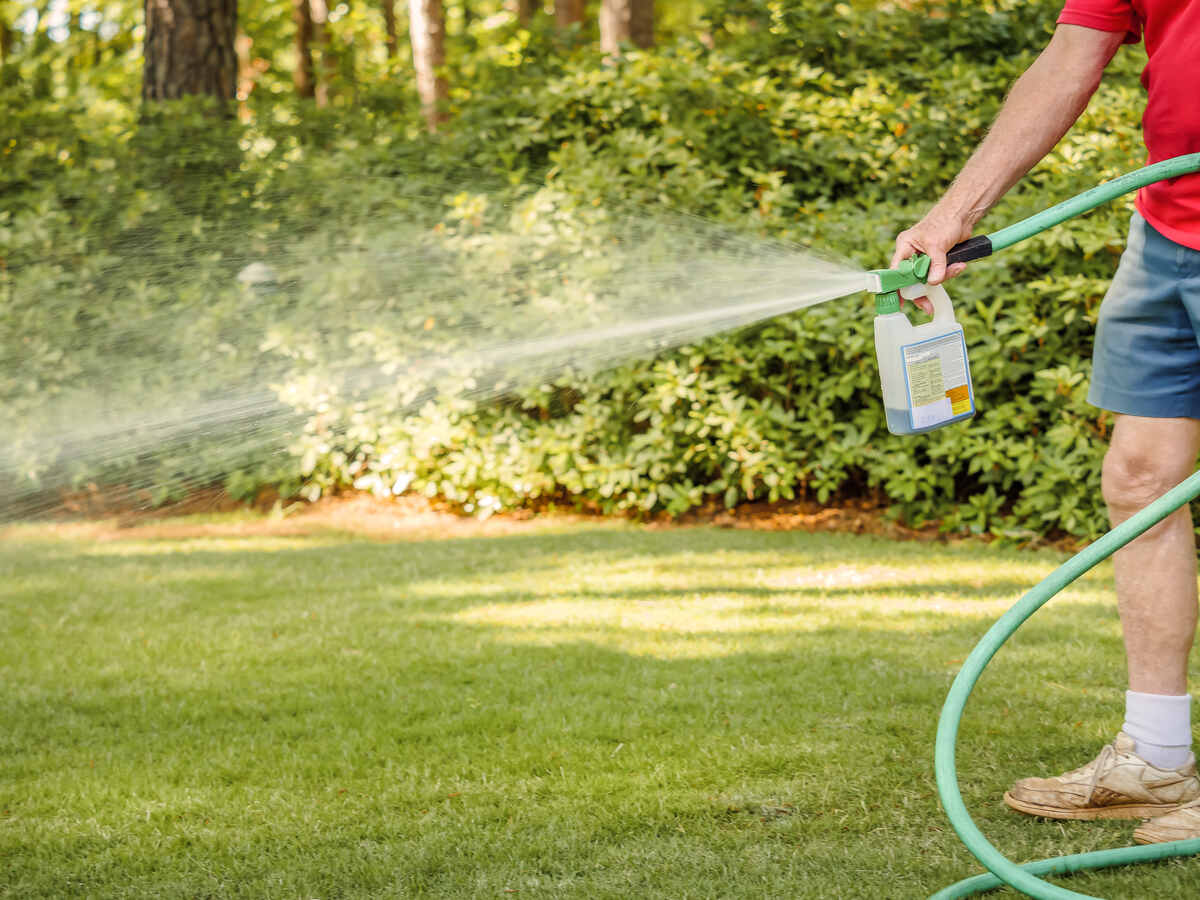
A lush, vibrant lawn is the pride of many homeowners, and proper fertilization is key to achieving that picture-perfect green carpet. Liquid fertilizers have become increasingly popular for their ease of application and quick results.
Unlike granular alternatives, liquid fertilizers provide immediate nutrients to grass roots and can be applied with precision across your entire lawn.
This article will guide you through how to apply liquid fertilizer to transform your lawn in seven easy steps, while avoiding common pitfalls that can damage your grass.
| Skill Level: Beginner Time Required: 30-60 minutes Cost: $25-$45 per gallon |
What is Liquid Fertilizer?
Like other fertilizer types, liquid fertilizer can be made of either organic or synthetic materials. It has the advantage of not needing to be broken down for its nutrients, which makes it easy for your plants’ roots to absorb.
For more information, read here: Liquid vs. Granular Fertilizer
Applying Liquid Fertilizer Step by Step
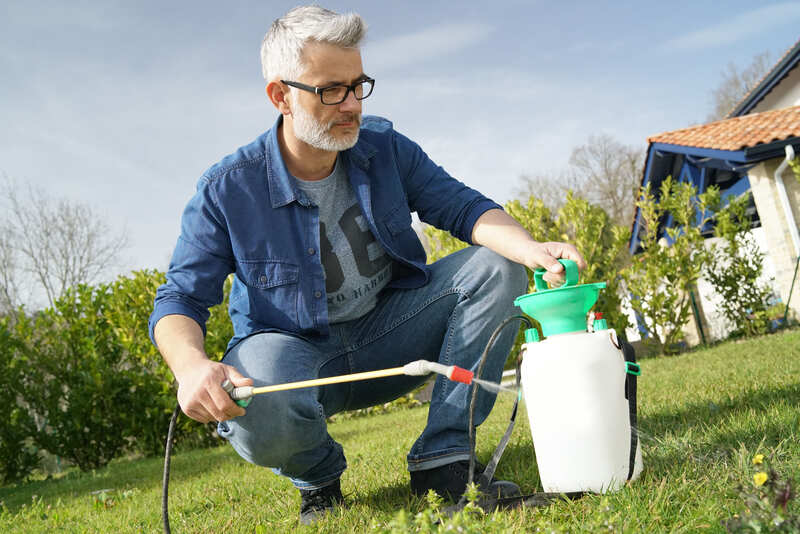
There are seven basic steps for applying liquid fertilizer. Each step is vital to ensure that the fertilizer does its job and doesn’t damage your lawn. If you skip steps, you may accidentally give your lawn fertilizer burn.
Follow these steps to apply liquid fertilizer safely and correctly:
Step 1: Pick the Right Fertilizer
There are many types of fertilizer, and each has a special combination of nutrients formulated for different types of grass.
Start with a soil test, which will tell you which nutrients are present in your soil and what is missing. Then look for a fertilizer that contains the right NPK ratio for your lawn.
The NPK ratio refers to the amounts of the fertilizer’s three main ingredients, which are represented by the three numbers on the fertilizer’s container. The ingredients are, in order, Nitrogen, Phosphorus, and Potassium. So, for example, if the bag says 8 – 9 – 10, the fertilizer is eight percent nitrogen, nine percent phosphorus, and 10 percent potassium.
For more information on picking a fertilizer, read our article, How to Choose the Right Lawn Fertilizer
Step 2: Gear Up
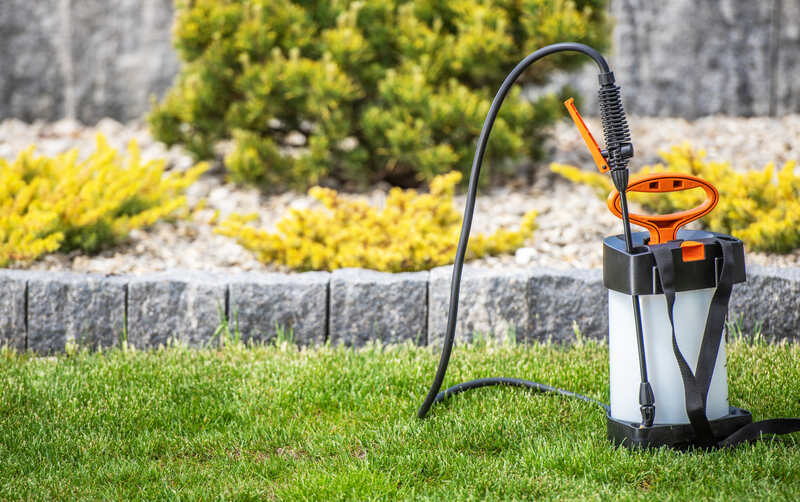
Liquid fertilizers are applied with a sprayer. If your fertilizer doesn’t come with a built-in sprayer, you can use either a pump sprayer or an attachment for your garden hose. If you already have a fertilizer sprayer, inspect it to ensure it’s working properly and not clogged before using it.
In addition to a sprayer, you need the proper Personal Protective Equipment. Eye protection is a must when using liquid fertilizer because the spray can come back at you in windy conditions.
You also need pants, a long-sleeved shirt, closed-toed shoes, and protective gloves, since liquid fertilizer can cause skin irritation. In large amounts, it can even lead to chemical burns. Always take great care when applying liquid fertilizer.
Step 3: Prepare Your Fertilizer
Next, mix your fertilizer. Many fertilizers have to be diluted in water in order to be used safely. Read the instructions on the container carefully before using any type of liquid fertilizer. They will tell you if your fertilizer needs to be diluted and how to mix it to achieve the desired ratio.
Step 4: Prepare Your Lawn
Water your lawn a day or two beforehand. Mow about 24 hours before fertilizing, and pull any weeds. If you use a chemical weed control, wait a week before fertilizing to allow your soil to absorb the weed control product.
If you’d like, you can also aerate and dethatch your lawn while you’re preparing it for fertilizer. These are optional steps, but now is a good time to do them.
For more information on aerating and dethatching, read our articles on How to Aerate a Lawn and When and How to Dethatch Your Lawn.
Step 5: Apply Your Fertilizer
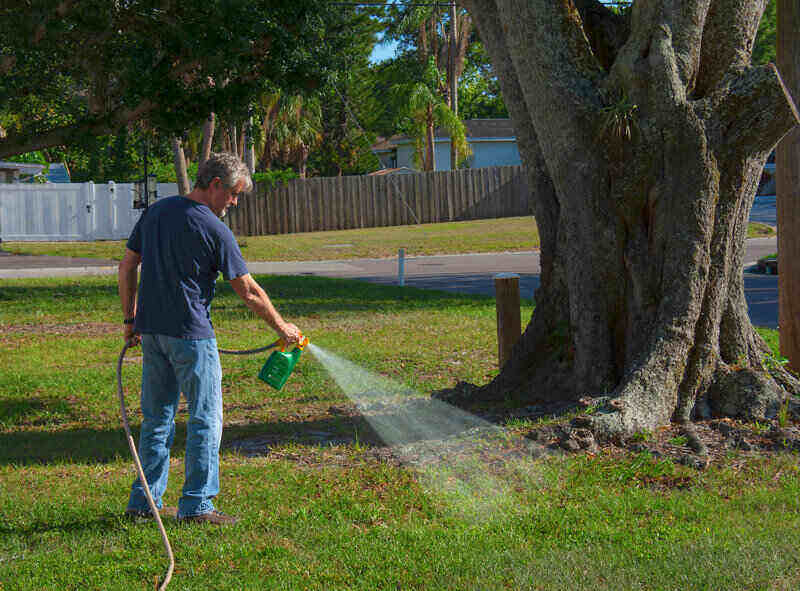
Now apply the fertilizer. Always follow the instructions, and be sure to apply the product evenly to the entire lawn. Uneven fertilizer application can result in streaks and patchy growth. Avoid overfertilizing as well, since too much fertilizer can cause brown patches and fertilizer burn.
Step 6: Water Your Lawn
Watering your lawn helps liquid fertilizer penetrate the soil and prevents fertilizer burn. Do not overwater or else you risk creating runoff, which will decrease the fertilizer’s effectiveness, contaminate local water sources, and harm wildlife.
Your fertilizer’s instructions should cover watering after application. When in doubt, wait two to four hours following the application to water your lawn. Water the lawn deeply to encourage deep root growth.
Step 7: Inspect Your Lawn
Take a moment to appreciate your lawn, but inspect it carefully. If you see a dry patch, water it. If there’s a weed you missed, pull it. When you’re satisfied that everything looks right, you’re free to go about your day.
What Happens If You Apply Fertilizer Wrong?
Proper fertilizer application is vital to avoid conditions like fertilizer burn. Applying too many nutrients at once is bad for the lawn. So if you fail to dilute your liquid fertilizer or apply it unevenly, you can harm your lawn and create brown patches where the grass is either dead or dying. In the worst-case scenario, you can even kill the entire lawn.
For more information, read here: What is Fertilizer Burn?
FAQ About Liquid Fertilizer
The first step in fixing fertilizer burn is to water your lawn. Watering the lawn dilutes the extra fertilizer and will put the grass on track to fix itself. After that, there’s not much you can do but wait.
Not necessarily. Liquid and granular fertilizers are better for different lawns. Focus on getting a fertilizer to match your needs rather than one that’s considered “better” overall.
If your lawn is showing signs of declining health despite proper fertilizer application, there may be another issue at play. Check for lawn pests, grass diseases, and other root causes – no pun intended – that could be damaging your lawn.
In particular, check for a weed infestation. Weeds steal nutrients from your lawn and garden plants, so if you’ve applied fertilizer recently, it may be helping the weeds instead of your grass. Grassy weeds especially can be difficult to spot and will have similar nutritional requirements to turfgrass.
Find a Lawn Care Pro Today
Liquid fertilizer can be a valuable tool when used correctly. However, if you apply it wrong, it can have disastrous consequences for your lawn.
If you need help maintaining your landscape, contact lawn care professionals near you. They can mow your lawn for you and create a fertilizer regimen so that you don’t have to worry about applying it yourself.
Main Image Credit: Shutterstock


